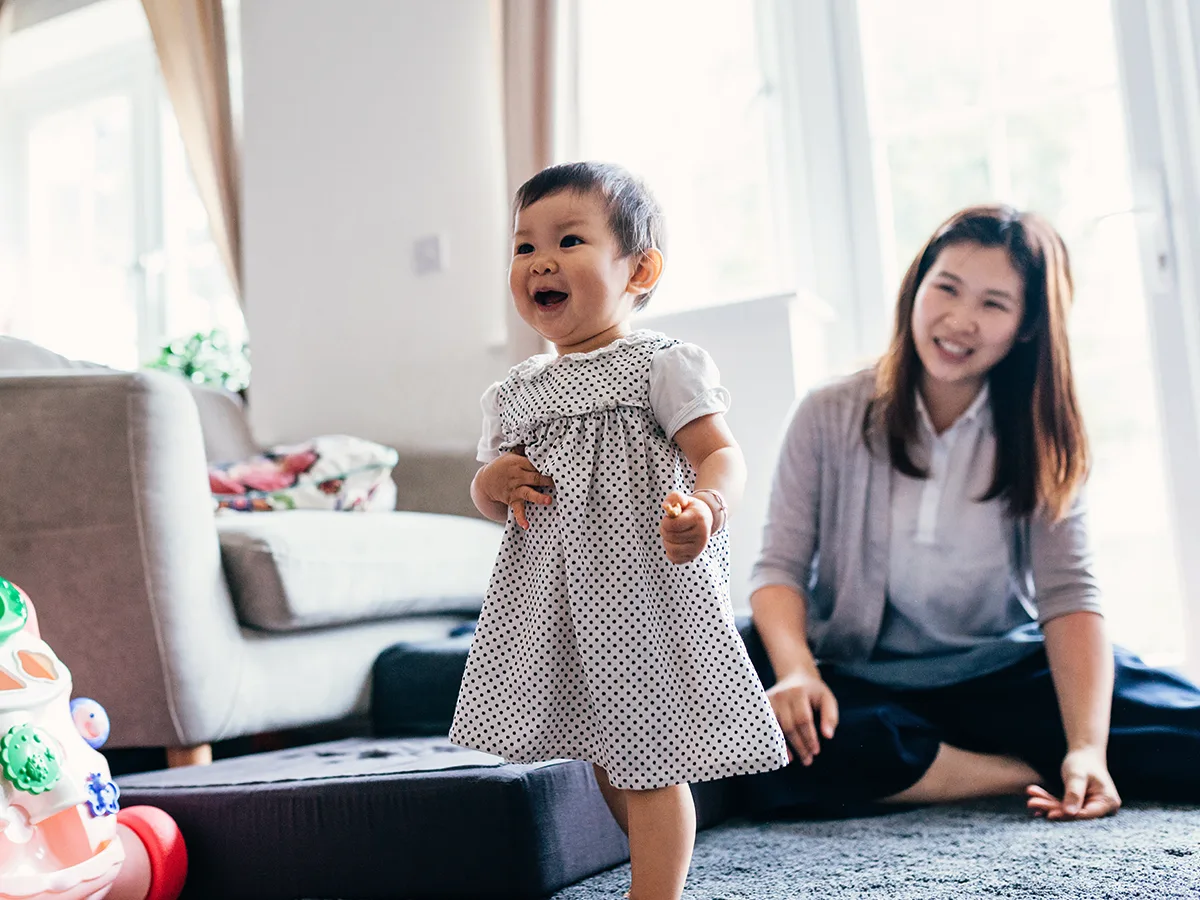Developmental milestones for 1-year-olds

By Amanda Morin
Updated June 15, 2022

At a glance
Young toddlers are constantly learning and growing.
They reach new milestones every few months.
Some 1-year-olds have delays in their development.
If you have a 1- to 2-year-old child, you know how busy toddlers can be at this age. Every day is filled with exploration and learning. But you may not be sure what skills are typical for kids this age.
The Centers for Disease Control and Prevention (CDC) has a list of milestones, which it updated with many changes in 2022. The agency moved some of the milestones to different age ranges, which some experts question.
The CDC milestones below can help you know what to expect. If your child isn’t meeting them, it can point to possible developmental delays. If you have concerns, be sure to talk to your child’s health care provider.
The CDC milestones below can help you know what to expect by 12 months, 15 months, 18 months, and 24 months.
You can also learn more about:
At 12 months
Social/emotional milestones
Plays games with you, like patty-cake
Language/communication milestones
Waves “bye-bye”
Calls parent “Mama,” “Dada,” or another name
Understands “no” (pauses or stops when you say it)
Cognitive milestones (learning, thinking, problem-solving)
Puts things into a container, like a block in a cup
Looks for things they see you hide, like a toy under a blanket
Movement/physical milestones
Pulls up to stand
Walks holding on to furniture (“cruising”)
Drinks from a cup without a lid while someone else holds it
Uses thumb and pointer finger to pick things up
By 15 months
Social/emotional milestones
Copies other children while playing, like taking toys out of a container when another child does
Shows you an object they like
Claps when excited
Hugs stuffed doll or other toy
Shows you affection (hugs, cuddles, or kisses you)
Language/communication milestones
Tries to say one or two words besides “Mama” or “Dada,” like “ba” for “ball” or “da” for “dog”
Looks at a familiar object when you name it
Follows directions given with both a gesture and words. For example, giving you a toy when you hold out your hand and say, “Give me the toy.”
Points to ask for something or to get help
Cognitive milestones (learning, thinking, problem-solving)
Tries to use objects the right way, like a phone, cup, or book
Stacks at least two small objects, like blocks
Movement/physical development milestones
Takes a few steps without help
Uses fingers to feed themselves some food
By 18 months
Social/emotional milestones
Moves away from you, but looks to make sure you are close by
Points to show you something interesting
Puts hands out for you to wash them
Looks at a few pages in a book with you
Helps you dress them by pushing arm through sleeve or lifting up foot
Language/communication milestones
Tries to say three or more words besides “Mama” or “Dada”
Follows one-step directions without any gestures, like giving you the toy when you say, “Give it to me.”
Cognitive milestones (learning, thinking, problem-solving)
Copies you doing chores, like sweeping with a broom
Plays with toys in a simple way, like pushing a toy car
Movement/physical development milestones
Walks without holding on to anyone or anything
Scribbles
Drinks from a cup without a lid and may spill sometimes
Feeds themselves with their fingers
Tries to use a spoon
Climbs on and off a couch or chair without help
By 24 months
Social/emotional milestones
Notices when others are hurt or upset, like pausing or looking sad when someone is crying
Looks at your face to see how to react in a new situation
Language/communication milestones
Points to things in a book when you ask, like “Where is the bear?”
Says at least two words together, like “More milk.”
Points to at least two body parts you name, like nose or toes
Uses more gestures than just waving and pointing, like blowing a kiss or nodding yes
Cognitive milestones (learning, thinking, problem-solving)
Holds something in one hand while using the other hand; for example, holding a crayon box and taking out a crayon
Tries to use switches, knobs, or buttons on a toy
Plays with more than one toy at the same time, like putting toy food on a toy plate
Movement/physical development milestones
Kicks a ball
Runs
Walks (not climbs) up a few stairs with or without help
Eats with a spoon
Keep in mind that kids develop at different rates. Your child might meet some of these milestones a little earlier or a little later. But if your child isn’t meeting most of them, talk to your child’s health care provider.
It might be helpful to get an evaluation to look at your child’s skills. That lets you talk about early intervention strategies and other ways to help.
And take a look forward at developmental milestones for 2-year-olds.
Key takeaways
Kids develop at different rates — these milestones are just what is typical.
If you’re concerned, talk with a health care provider about having your child evaluated.
Early intervention can make a big difference if your child needs help.
